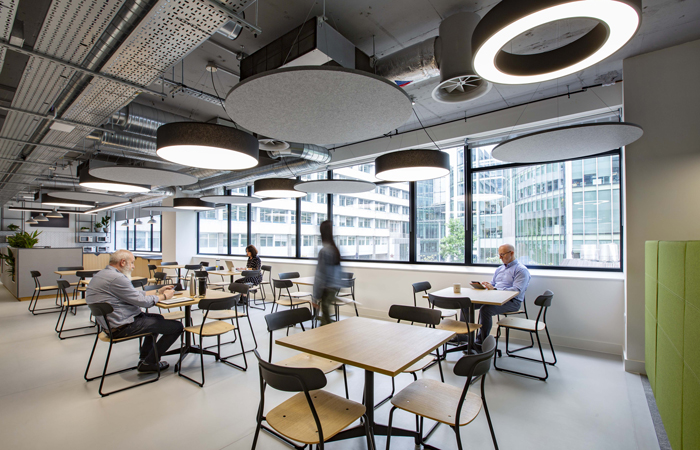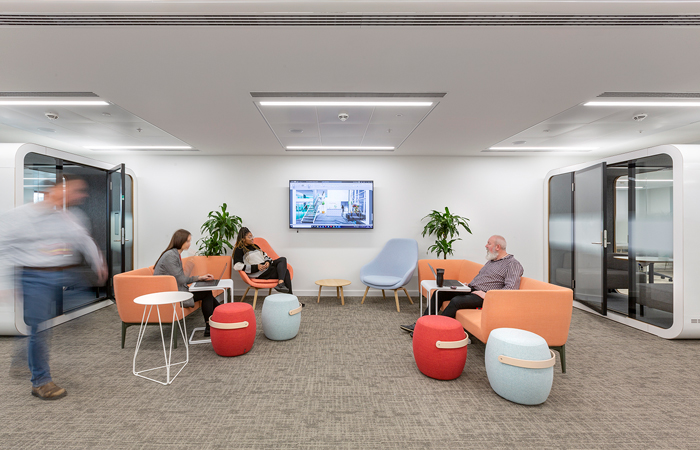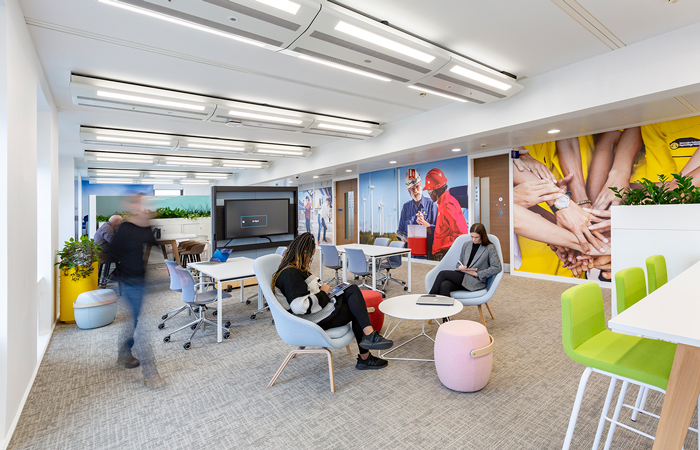Introducing Clare Danahay, Director of Workplace at WILL+Partners
Meet Clare Danahay, a seasoned professional with over two decades of experience in the commercial interior design industry. Having spearheaded award-winning projects across diverse sectors, including commercial offices, healthcare, higher education, and leisure, Clare has honed her expertise in workplace design. Her background, which includes a deep understanding of the hospitality industry, informs her approach to creating transformative work environments.
In this interview, Clare shares insights into her role as Director of Workplace at WILL+Partners, shedding light on the firm’s core philosophy of placing people at the heart of their design process. She delves into the impact of design on the quality of life and productivity for those who inhabit these spaces. Clare also discusses her specialisation in workplace consultancy, the importance of nurturing a sense of community within workplaces, and the exciting projects and sustainability initiatives on the horizon for WILL+Partners.

Clare Danahay, Director of Workplace at WILL+Partners
Please could you begin by introducing yourself and WILL+Partners?
I have worked in the commercial interior design space for over 20 years now and spearheaded some award-winning projects across sectors in everything from commercial offices and healthcare, to higher education and leisure. I have specialised specifically in workplace design for some time now, and my experience with the hospitality industry really helped inform that.

British Red Cross
I recently joined WILL+Partners as director of workplace. We both have a shared passion of connecting people through design and shared human experiences. Our core approach to designing for our clients is the understanding that we’re not trying to create environments which are ivory towers that nobody can actually function in. It’s about how people feel every day when they come to work and cultivating a space where they can work effectively and with ease. So really understanding the needs of the users is the prime objective before we even go into any design work.

British Red Cross
WILL+Partners as a workplace design and strategy architecture practice is really pushing the boundaries of what it means to have people at the centre of design, and it’s why I am so excited to be onboard and continue this shared mission.
At WILL+Partners, how does your belief in the transformative power of design translate into tangible improvements in the places we use and the quality of life for those who use them?
Everybody is very aware that environments can impact our health and wellbeing. Ensuring that a space is a positive place to be, will improve people’s sense of belonging and is important for supporting people’s ability to do the tasks needed, to a good standard. I like to look at how you can organically build communities within the workplace design, and how you can actively encourage connectivity between individuals. We need to ensure that when people are working together, they’re not isolated, or siloed. A well-considered design which supports the needs of the users and their roles, will make an employee’s experience more positive and effective. Going into an office or a workplace environment should be a purposeful experience that adds value to the individual and the organisation. It should never negatively impact somebody’s health and wellbeing. The workplace should generally look to improve the balance of work and life.

Will+Partners’ Waterloo Studio
In your new capacity as Director of Workplace, do you find yourself gravitating towards specific specializations that particularly resonate with you?
In my role I like to really involve myself in workplace consultancy and really understanding a business’s unique needs. Everyone and every company is different and each requires a bespoke approach to what they’re aiming to achieve. Of course, there is the through thread of generating positive and effective environments, but the roadmap to achieving them really takes a different journey for each business. I like to get under the skin of how a business and its people operates and functions to create the best possible design briefs and, in turn, workplace design. I apply a hands on, detailed and granular method to every project, and marry that up with what an organisation is trying to achieve.

Will+Partners’ Waterloo Studio
You’ve previously highlighted that “the workplace is all about the communities that inhabit it.” Could you elaborate on the strategies and design elements you employ to nurture a sense of community within the spaces you create?
It’s all about how we look at workplaces. It’s not just a place for people to be anchored to their desk anymore, but about being able to curate environments where people can collaborate and be together. We need to move past the idea that collaborative spaces only apply to the needs of certain job functions when roles that can be considered ‘transactional’ and non-collaborative can still greatly benefit. It should be about the connection with other people, even if you might not be constantly collaborating with them about work. It’s being able to create those incidental areas where people can informally support each other and knowledge share, benefitting themselves, colleagues and the business.

Shell
Employers need to really consider how they can create that sense of belonging to community environments by having social hubs and collaboration spaces, breakout spaces, cafes and restaurants. It’s not just about thinking about the workplace in the traditional sense of going to sit at a desk and doing your tasks all day.
What can we look forward to seeing from WILL+Partners and your workplace team in the near future?
We have some exciting projects that we’re working on at the moment where we are able to work from the early stages of workplace strategy to understand the needs of the organisation, all the way through to delivery. It is always such a joy to see these end-to-end projects unfold and blossom into effective future workplaces.

Shell
The main focus on a lot of the projects are around sustainability and the health and wellbeing of users. We’re really considering how we can reuse and recycle existing furniture and thinking about the impact of carbon costs and the impact throughout the entire lifecycle of a project. It’s important to address the use of furniture within our designs and take a moment to step forward towards a circular economy with materiality at the forefront of our decision making. We’re very focused on ensuring that we provide environments that are supportive of people using them and respect the environments they’re generated from. This is a fundamental part of what we do.




